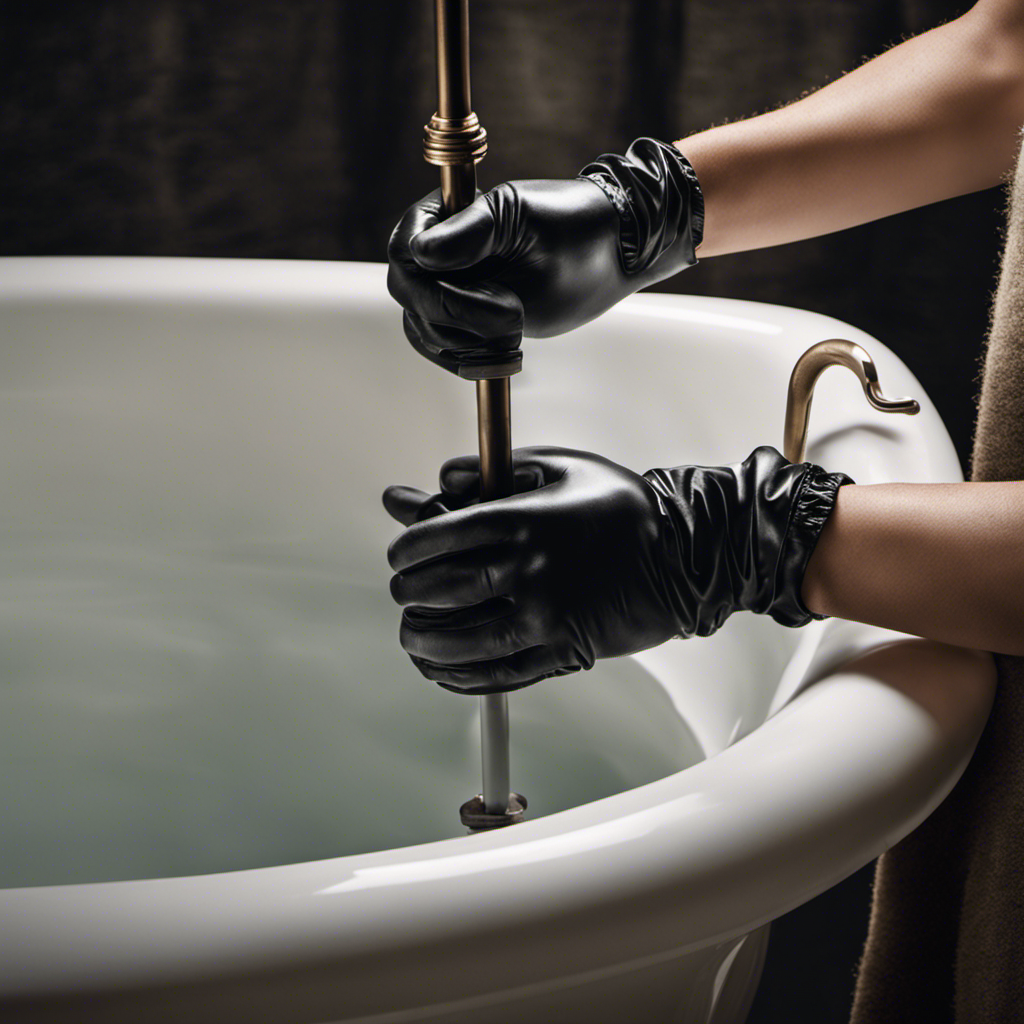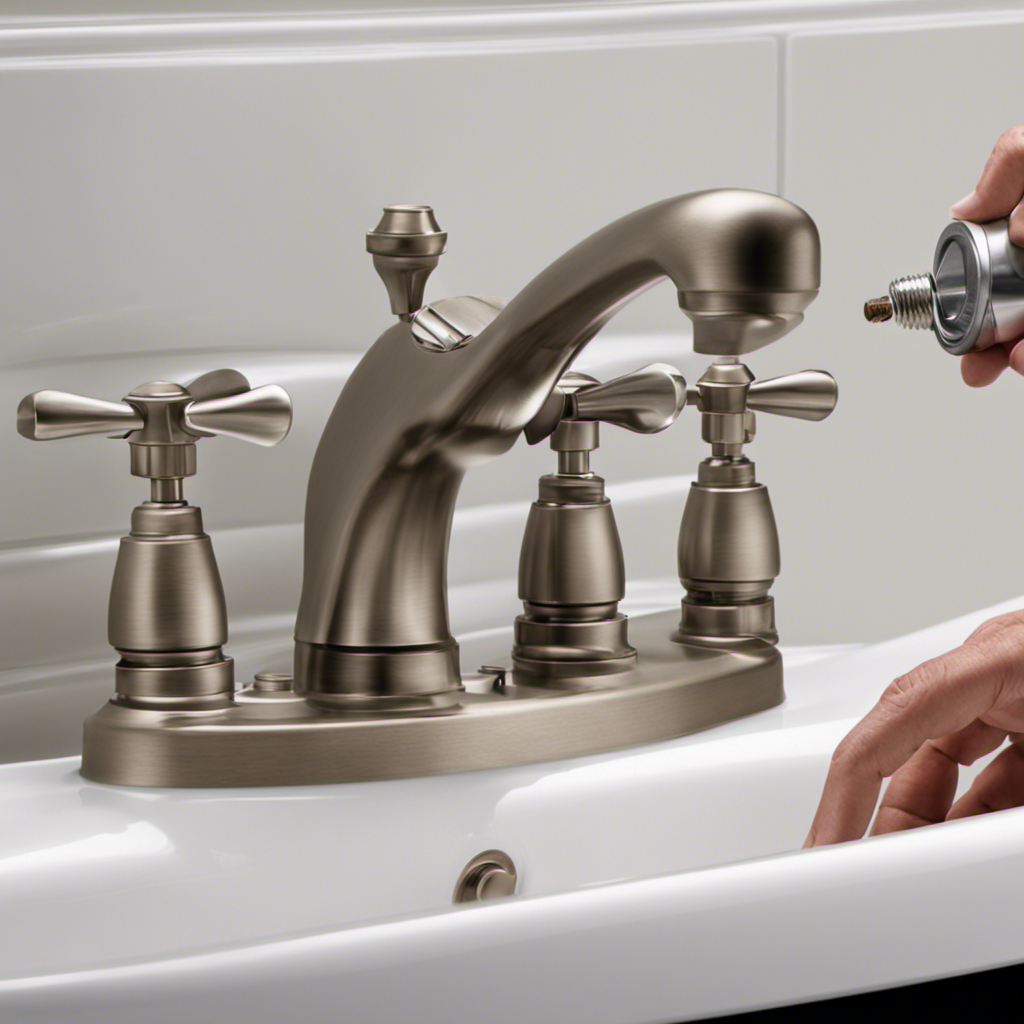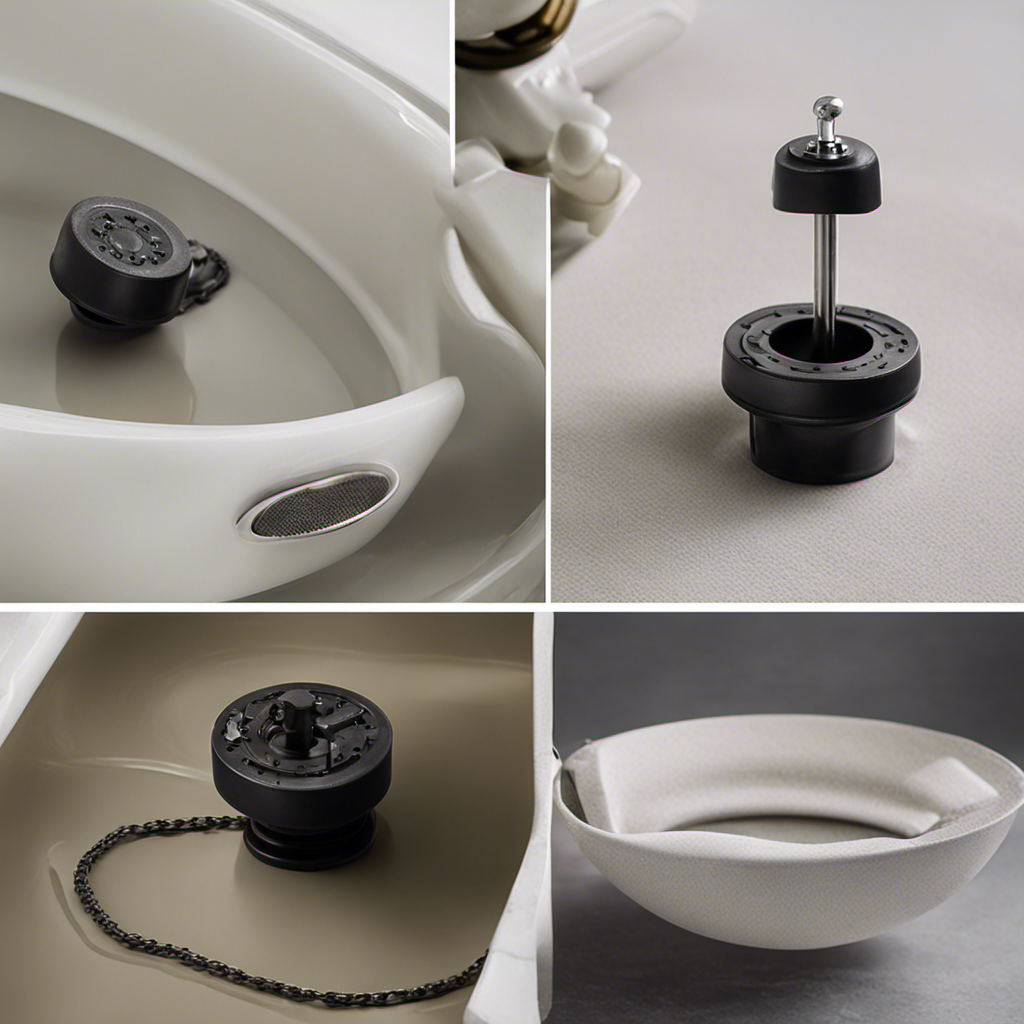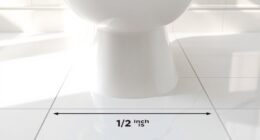Did you know that a clogged bathtub drain is one of the most common household plumbing issues? If you’ve ever found yourself standing ankle-deep in water while showering, you understand the frustration.
But fear not, because in this article, I will guide you through the process of unclogging your bathtub drain. With a few simple tools and some natural remedies, you’ll have your drain flowing smoothly again in no time.
So let’s roll up our sleeves and get to work!
Key Takeaways
- Slow draining water and standing water in the tub are common signs of a blocked bathtub drain.
- Gurgling sounds or unpleasant odors from the drain can also indicate a blockage.
- Rubber gloves, a plunger, a drain snake or auger, and a bucket or container are necessary tools for unclogging a bathtub drain.
- Natural methods such as using baking soda and vinegar, flushing with boiling water, or using salt and hot water can help clear the drain, while a plunger can be used for various types of clogs.
Identifying the Cause of the Bathtub Blockage
To figure out why your bathtub is clogged, you’ll need to identify the cause. Understanding common signs of a blocked bathtub can help you troubleshoot the issue effectively.
One common sign is slow draining water, where you notice the water taking longer than usual to go down the drain.
Another sign is standing water in the tub, indicating a complete blockage.
Additionally, if you hear gurgling sounds or notice unpleasant odors coming from the drain, it could be a sign of a blockage.
By paying attention to these signs, you can determine the cause of the clog and take appropriate action.
Now that you understand the signs, let’s move on to gathering the necessary tools and materials to unclog your bathtub.
Gathering the Necessary Tools and Materials
First, you’ll need to gather the tools and materials necessary for the job of removing stubborn bathtub blockages and preventing future bathtub clogs.
To start, you’ll need a pair of rubber gloves to protect your hands from any debris or chemicals. Additionally, a plunger will be essential for creating the necessary suction to dislodge the blockage. A drain snake or auger can also be helpful in breaking up and removing stubborn clogs. You may want to have a bucket or container on hand to catch any water that may spill out during the unclogging process. Finally, consider using a drain cleaner or natural alternative to prevent future clogs.
With these tools and materials ready, you can now move on to clearing the bathtub drain using natural methods.
Clearing the Bathtub Drain Using Natural Methods
Once you have gathered your tools and materials, you can now use natural methods to clear the drain in your bathtub.
One effective natural remedy is using a mixture of baking soda and vinegar. Start by pouring half a cup of baking soda into the drain, followed by half a cup of vinegar. Let the mixture sit for about 30 minutes. Then, boil water and pour it down the drain to flush away the loosened debris.
Another option is using a combination of salt and hot water. Dissolve half a cup of salt in a pot of boiling water and carefully pour it down the drain. The hot water and salt will help dissolve any grease or grime that may be causing the blockage.
To prevent future blockages, consider using hair catchers or drain screens to prevent hair and other debris from entering the drain. Regularly flushing the drain with hot water can also help prevent buildup.
Unclogging the Bathtub Drain With a Plunger
Using a plunger is an effective method to clear a clogged drain in the bathtub. Here are three reasons why you should consider using a plunger for unclogging your bathtub drain:
-
Versatility: A plunger can be used for various types of clogs, whether caused by hair, soap scum, or other debris. Its suction power helps dislodge the blockage and restore proper drainage.
-
Safety: Unlike chemical drain cleaners that contain harsh chemicals, plungers provide a safer option. Chemical drain cleaners can damage pipes and emit harmful fumes, posing a risk to your health and the environment.
-
Cost-effective: Using a plunger is a cost-effective solution. It requires no additional expenses and can be used multiple times for different clogs.
When a plunger fails to clear a stubborn blockage, it may be time to seek professional help.
Seeking Professional Help for Stubborn Blockages
Seeking professional help is a wise decision when a plunger fails to clear a stubborn blockage. While regular bathtub maintenance is important to prevent blockages, sometimes even the most diligent efforts can result in a stubborn clog.
It’s crucial to recognize the signs of a serious bathtub blockage that requires professional assistance. If you notice slow draining, gurgling sounds, or foul odors coming from your bathtub drain, it could indicate a more severe blockage. These signs suggest that the clog is deep within the pipes and cannot be easily cleared with simple home remedies.
Conclusion
In conclusion, unclogging a bathtub can be a frustrating task, but it can be easily resolved with the right tools and methods. By identifying the cause of the blockage, gathering the necessary materials, and using natural or mechanical methods, you can successfully clear the drain.
However, if the blockage persists, it is advisable to seek professional help. Remember, Rome wasn’t built in a day, and neither is a clog-free bathtub.
So, roll up your sleeves and tackle this challenge head-on!










